I’ve been wanting to test out this recipe here for a year, had asked my local health food shop to order some chestnut flour but after a month of waiting they told me they couldn’t get any. This summer on ordering lots of different flours from Shipton Mill I was delighted to see they sold some.
There is a big problem with this recipe as far as I’m concerned which I discuss below. This is also still a work-in-progress recipe for me with regards to the flour.
However, the process here of making Madeleines is right (minus the last step) and when I cross reference the method with my text books this is the classic way of making them; whisk eggs & sugar, fold flour & baking powder in, fold in cooled melted butter, bake. Therefore you can use these steps to make your own version of Madeleines.
When I opened the pack and measure out the flour I could see it was quite gritty and I used my finest sieve (chinois mesh fine) to sift out the tiny granules of chestnut as you see below.
Unfortunately it didn’t result in the fine texture flour I want for Mandeleines. You can see from the appearance of them below, it doesn’t appear to have the smooth texture I would expect in these cakes.
It reminds me of polenta flour when making a cake. Having a fine grit texture is good enough for some cake types but not here. This brings me on to the point of using chestnut flour for them. Why? Two reasons I think, one for the fact it’s gluten free and the second if you have lots of chestnut flour available cheaply.
Chef/blogger friend Gregoire is right, chestnut flour is tasteless, good for using in a Madeleine, wanting the taste of the butter to come through but if I was making these for a gluten sufferer I would want superfine ground chestnut flour, if such a thing exists.
Classic Method of Making Madeleines
- Melt the butter first and let it cool while getting on with the cake.
- Sift the flour and baking powder together, set aside.
- Using an electric whisk, whisk the eggs and sugar until very thick, a good 5 mins, the mixture should appear thick mousse like and fall in ribbon shape off the whisk.
- Fold the flour in three stages, using a large spoon.
Once the flour is completely incorporated the mixture will be even thicker.
Now add all of the melted butter (should be room temperature now) fold that in.
Once all the butter has been folded in you are left with the mixture below, thick and perfect to now fill your Madeleine moulds 3/4 full.
Oil your moulds even if they’re non-stick ones, just for your mind’s sake and prevent tantrums further down the line.
Disagreement with the Recipe
This is where I and the recipe I followed Chestnut Flour Madeleines totally part company in agreement. It said to put the mixture in the fridge for 2 hours. I did what I was told because having never made them before and not having time to cross reference the recipe I trusted it it knew better than me.
But look below my suspicion was right. Refrigerating a mixture with lots of butter in will make it go solid as you see. What’s the point then? This makes it harder to place it on the tray.
I also follow its advice of baking temperature and times and that was a mistake too.
Ended up as you can see with slightly shrivelled very dark Madeleines.
On baking the second batch, to the very left, I lowered the temperature and baked them for 9 mins and they turned out successful.
I removed them straight away from the moulds as I didn’t want them to dry out further.
The recipes I’ve seen in my books do have this method of having the oven higher to start with for a few minutes and then to turn it down for the rest of the short baking time.
I think I brought my oven up to temperature of 190C fan, but turned it down to 165C fan as soon as the Mandeleines were put in. This method of baking is suppose to give them the little ‘hump’. On on second batch I had a more pronounced hump than the first but this was using chestnut flour and I don’t believe you can expect the same results as wheat flour.
You have to just bake Madeleines to maintain them moist. The very first time you bake some you may need to accept your first batch will be a trial run for you particular oven. Be prepare to make more I say.



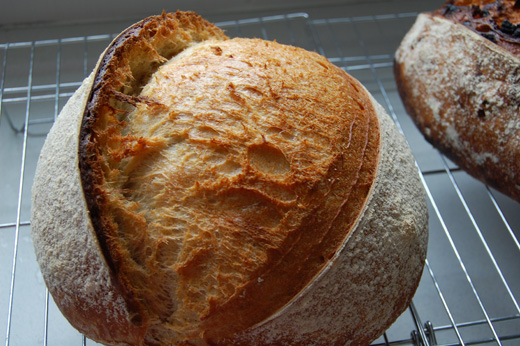
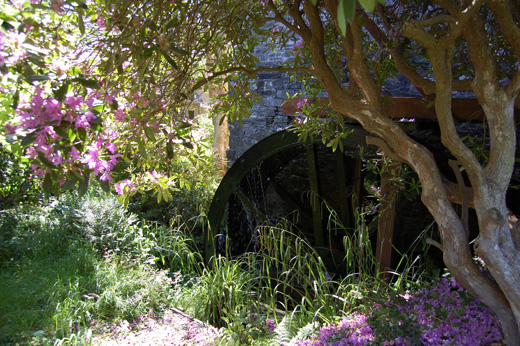
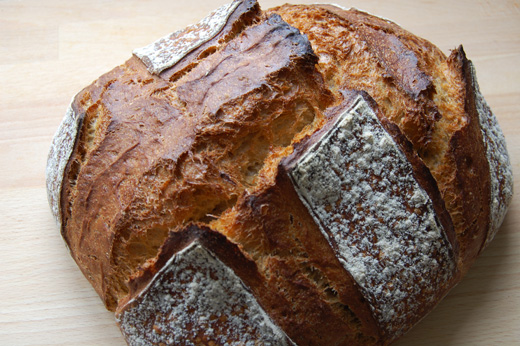



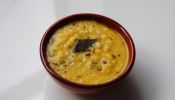


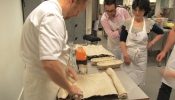














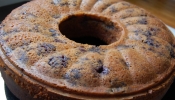


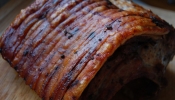

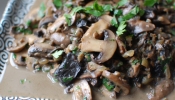

{ 7 comments }
Olá Azélia!
Estas madalenas parecem-me uma delícia; quero uma já para o lanche.
De facto a farinha não ficou muito fina. Nós estamos a utilizar uma farinha de castanha para um pão e, amanhã mesmo, vou confirmar a marca.
Já provaste fazer as madalenas com azeite? Eu gosto bastante, já que a manteiga não é muito do meu agrado.
Yes Marlène diz-me o nome da marca da farinha. Manda-me a receita para elas com azeite, porque eu queria fazer, obrigada.
I think your Madeleine look normal. Using chestnut flour, like you said, won’t give you the same as with wheat. After all, chestnut is a nut and the only one with just 2% to 3% fat compared to other nuts. (which is, along with being starchy, probably why it can be turned into a kind of flour and not just ground or paste like almonds or other nuts…)
I wish Madeleine would overtake cupcakes as the next big pastry thing!
Hi Gregoire – chestnut flour produces normal and taste normal Madeleines with strong taste of butter it’s just the texture was wrong, too coarse. I’m going to make many more variations of these, so easy and lovely
I bought chestnut flour today but it isn’t granulated as yours.
I would made a bread with it.
When you receive the recipe of madeleines with olive oil that Marlene talks about, please send me too
Regards
Manuela
Will sent it to you today Manuela
I’ve always mixed asian white rice the type that is steamed with 12% water to 88% white rice. It feels very silky to the touch and lightens the chestnut flour.